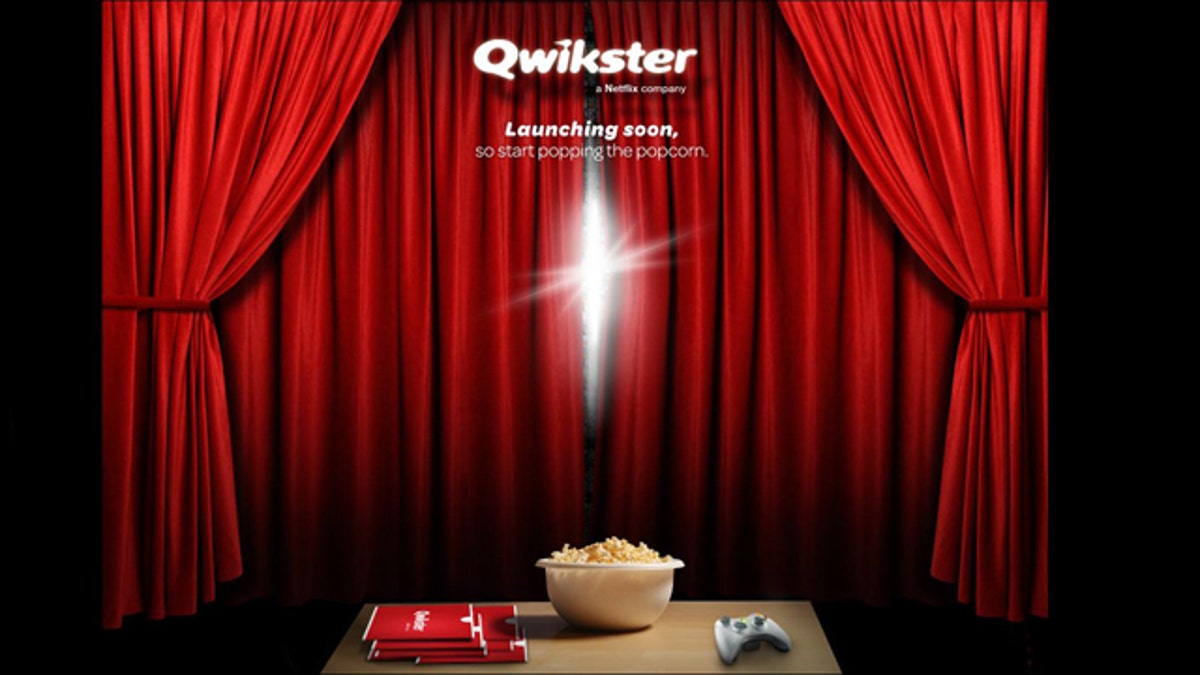
Netflix recently announced plans to divorce its DVD business from its streaming web video service and rebrand it Qwikster -- a plan that turned out to be short-lived. (Netflix)
That was Qwik.
Netflix canceled plans to split off its DVD business into a separate service called Qwikster on Monday -- a decision that came just three weeks after the company announced that it would create the new service.
That's a good thing, actually: The Twitter handle @Qwikster is already registered to a foul-mouthed pothead who sports a doctored icon of Elmo from Sesame Street smoking what appears to be marijuana.
The decision to cancel the service immediately boosted the company's stock by nearly 10 percent, but it also left egg on the company's face. Netflix should take solace: It's not alone. There have been several epic product fails -- expensive new products that the public didn't want. Here's five that didn't quite make it.
1. New Coke. Perhaps the grandest fail of them all. In an effort to diversify its product line, the Coca Cola Co. in the 1980s took a beloved product, changed it, and tried to sell it to the public. Consumers were quick to voice their opinions of the product, loudly enough that the company was forced to bring back the original flavor as "Coke Classic."
Good luck finding New Coke at your local supermarket today.
2. Iridium Communications. How do you like your cellphone? What if you could get one that worked marginally better for five or six times the cost? That was the plan behind Iridium, which launched a network of satellite phones in the late '90s at a cost of several billion dollars. People balked at the price of the devices, which initially cost $3,000 and $4 to $7 per minute for service, and the company rapidly went bankrupt. The satellite network was eventually sold off for a few million dollars.
In early September, the new owners of the Iridium satellites launched a new product based on the same network. Called the AxcessPoint, it will offer slower than dial-up coverage worldwide -- provided you pair it with a phone that costs about $1,000. Hmm.
3. iSmell. A company called DigiScents came out with a concept for a gadget in early 2001 that would add smells to go along with the websites you visit and the emails you read. It was arguably a clever idea: Different odor modules within the device spat out bits of scent to create just the right smell. The problem? Who wants a stinky web page? PC World magazine named it one of the world's worst products.
4. Microsoft Zune. Apple has sold millions of iPods, Microsoft executives must have been thinking. That's a market we need to get into! The company did, launching the Zune in 2006 -- to surprising acclaim. Tech reviewers noted several neat features, such as the ability to share songs with other Zune owners and a pretty decent user interface. The public took one look at the device and said, "no thanks."
Five years later, Microsoft was forced to pull the plug on the project, though the company claims it will continue to support current users.
5. Cuecat. In late 2000, magazine readers across the country were surprised to receive a white plastic cat in the mail, about the size of a ball-point pen. The bar-code scanner was designed to read special symbols in magazines to help shoppers find stuff and learn more about the articles they were reading. People almost immediately threw out the bar code readers, and magazine publishers stopped printing the bar codes within a year.
Magazines today feature QR codes -- square symbols that service much the same function. But since they're readable by most cellphones, QR codes may have a longer shelf life.
But that's entirely up to you.
